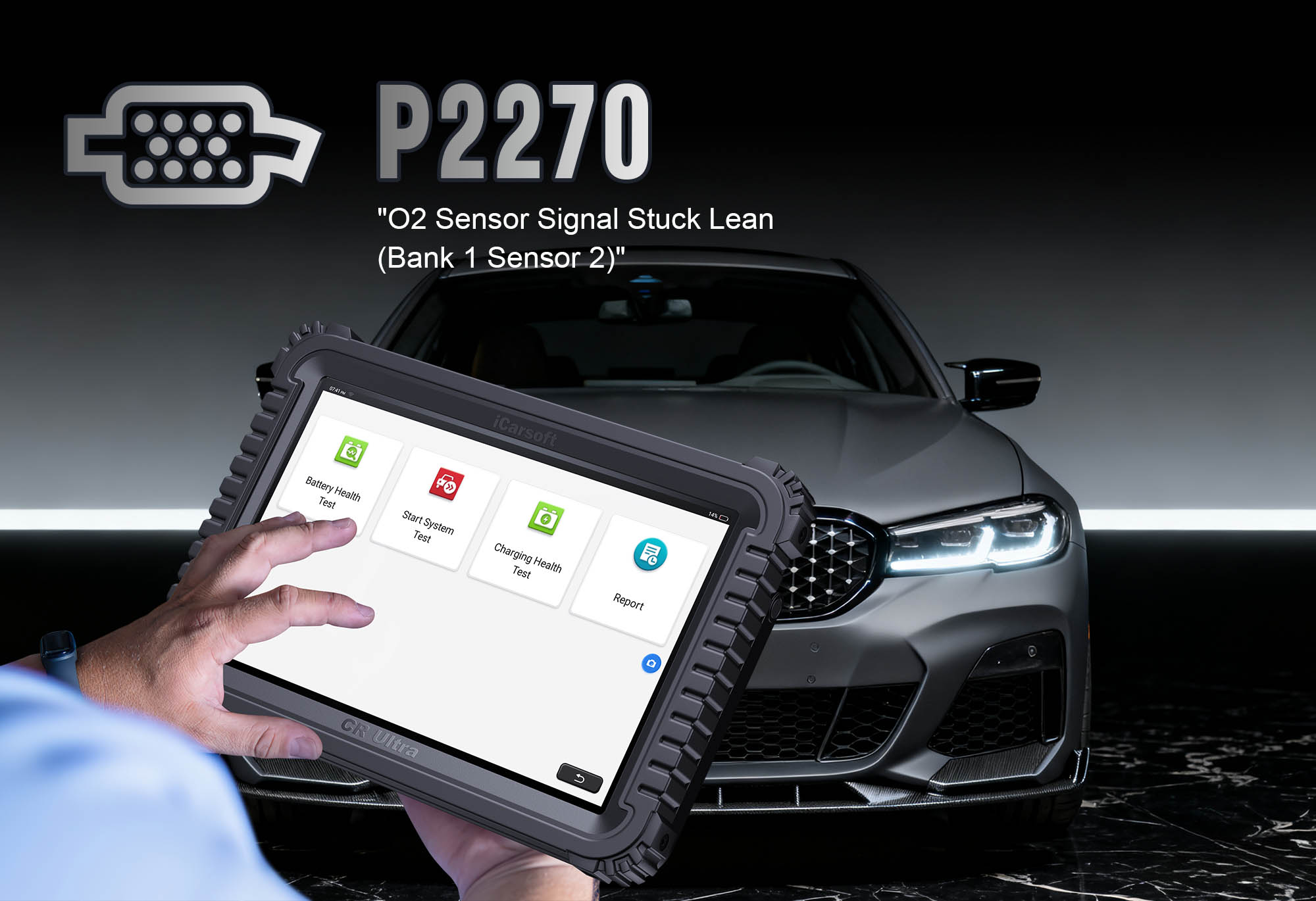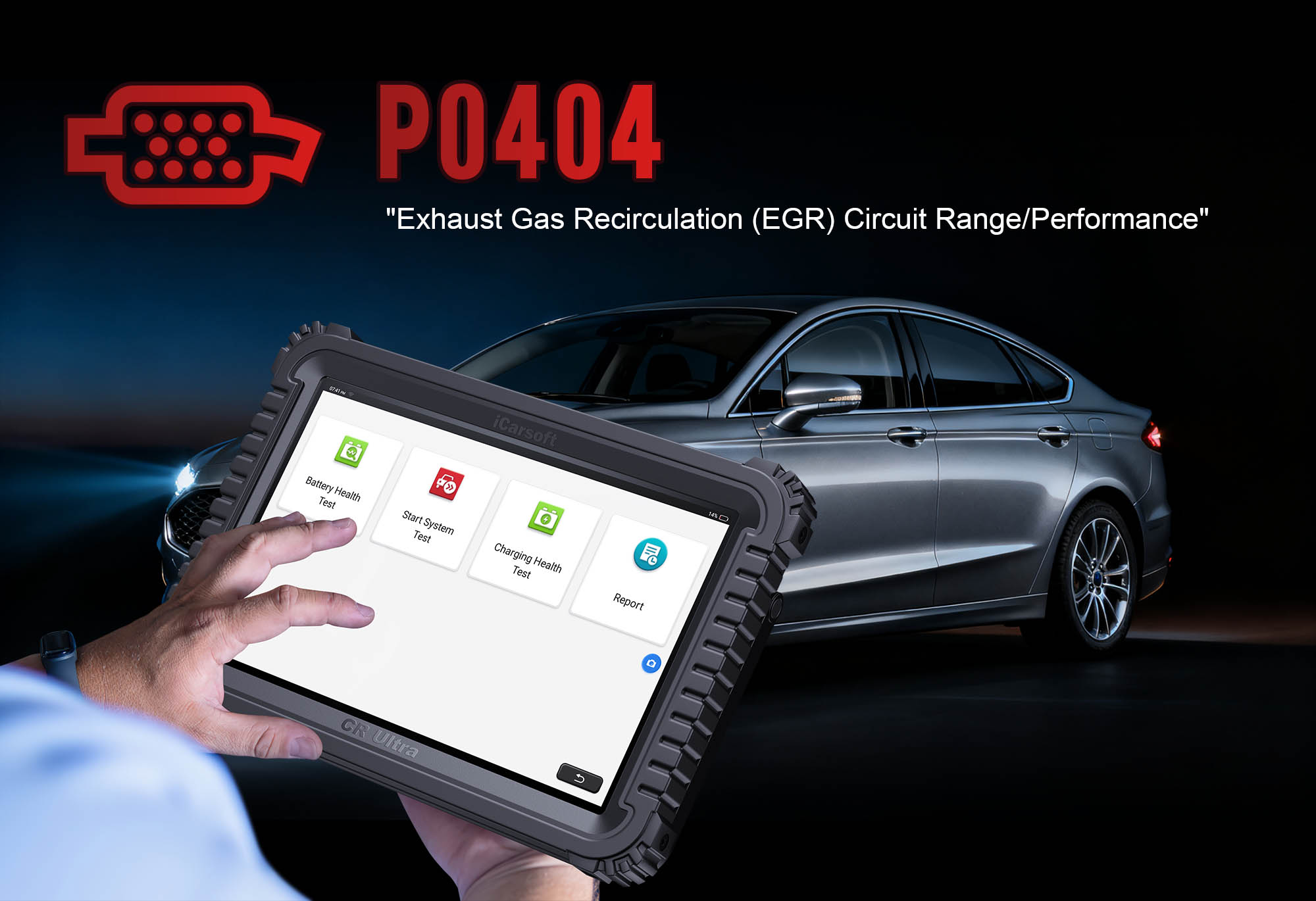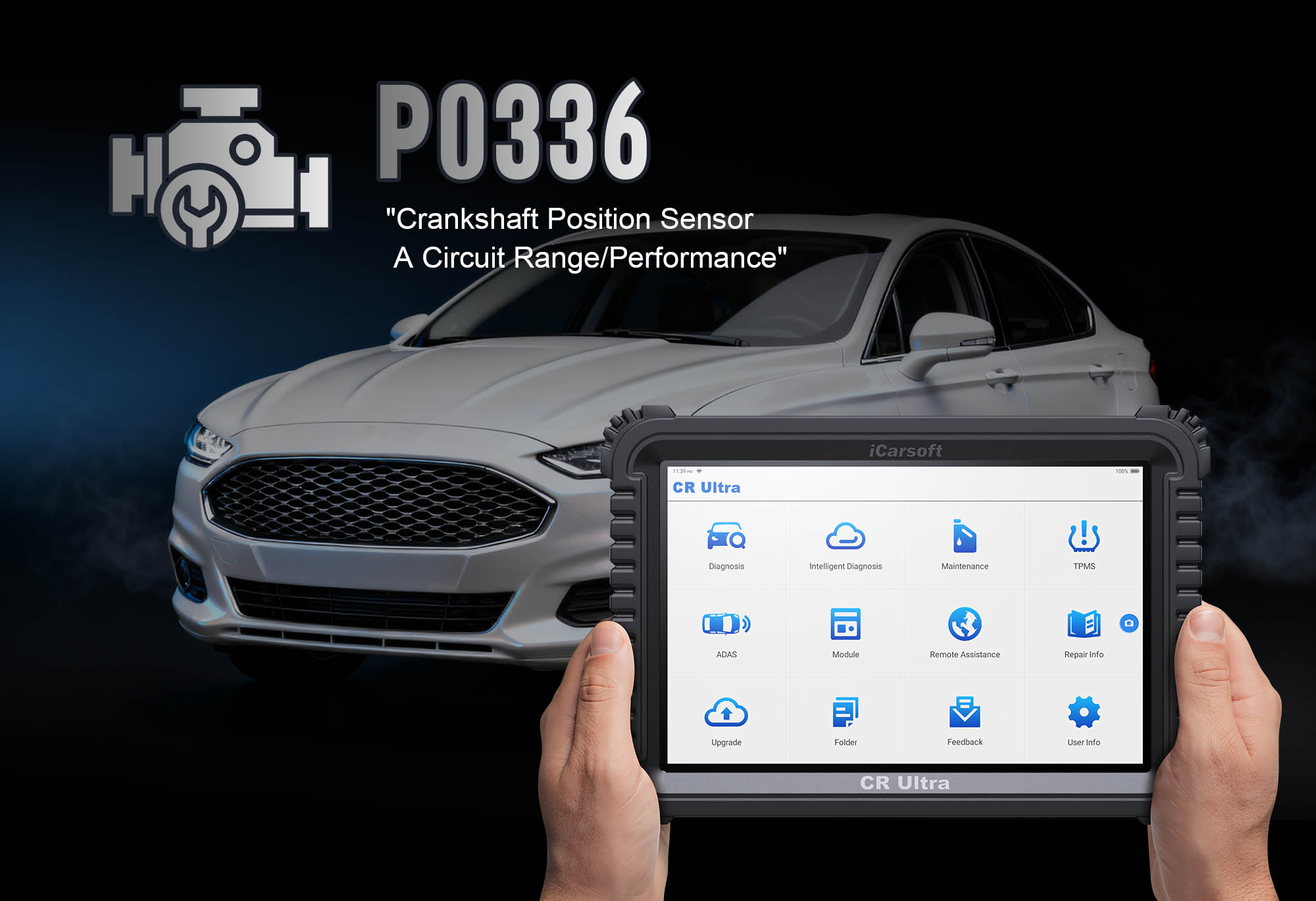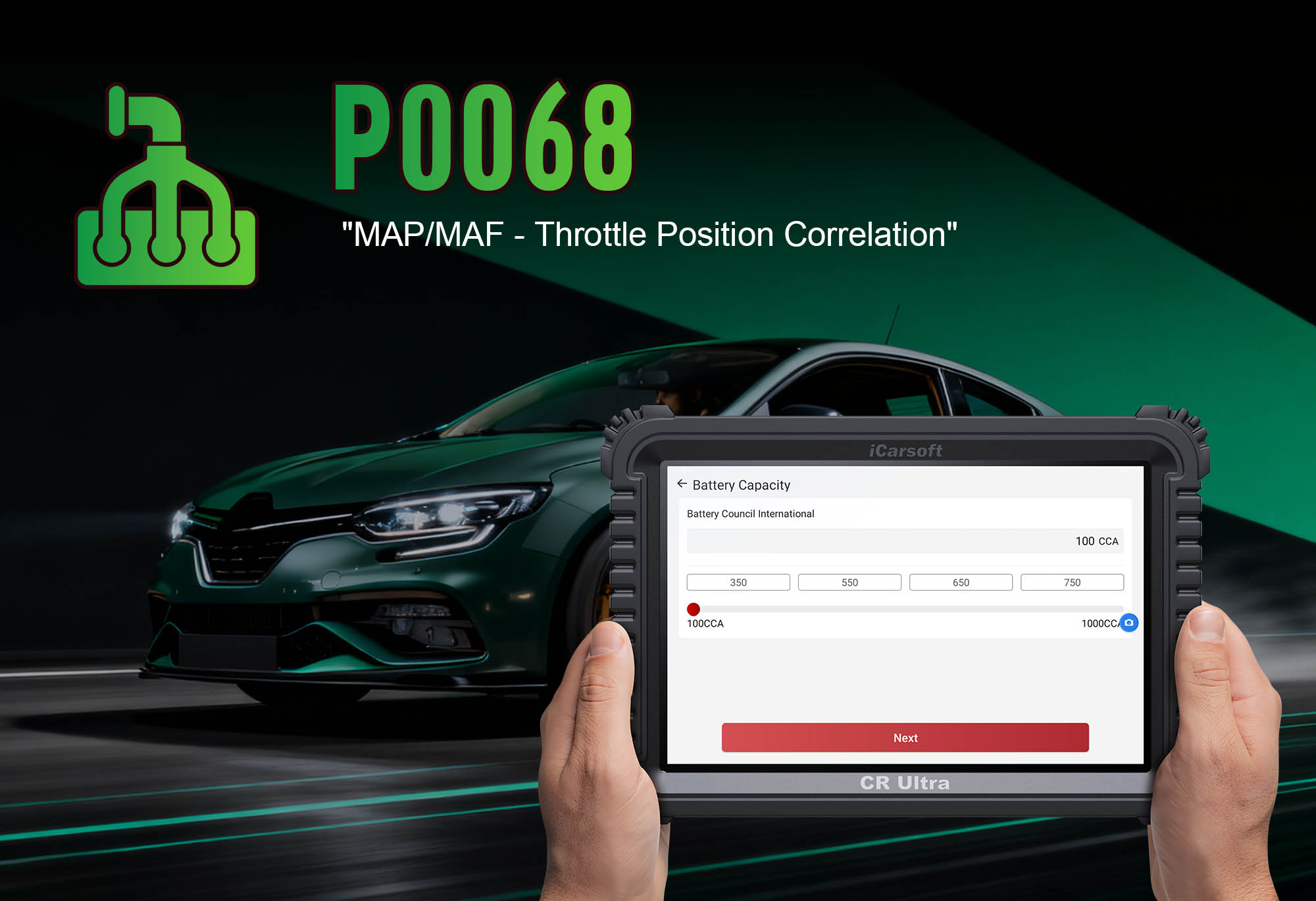Diagnose & Clear P2270 with iCarsoft CR Ultra: Fix Air/Fuel Imbalance (Bank 1, Sensor 2)
If your check engine light illuminates and you notice increased emissions, reduced fuel efficiency, or hesitation during acceleration, a diagnostic scan will likely return P2270. This OBD-II code stands for "Air/Fuel Imbalance Detected (Bank 1, Sensor 2)," indicating the Engine Control Module (ECM) has detected a persistent mismatch between the air-fuel mixture readings from the upstream and downstream oxygen (O2) sensors in Bank 1.
Downstream O2 sensors (located after the catalytic converter) monitor the efficiency of exhaust gas treatment by comparing readings to the upstream sensor. A balanced system shows the converter significantly reducing unburned fuel and pollutants, creating a stable downstream signal. P2270 triggers when the downstream sensor (Bank 1, Sensor 2) detects uncharacteristic fluctuations, signaling a converter failure or upstream air-fuel imbalance. Left unaddressed, this can cause failed emissions tests, catalytic converter damage, and increased fuel consumption.
Basic scanners may only flag "air/fuel imbalance" but can’t compare sensor signals or test converter efficiency. The iCarsoft CR Ultra—with its dual O2 sensor tracking, converter efficiency tests, and live data correlation—solves this. Let’s explore how to diagnose and resolve P2270 using this professional-grade tool.
 iCarsoft CR Ultra: Analyzing Bank 1, Sensor 2 to resolve air/fuel imbalance issues
iCarsoft CR Ultra: Analyzing Bank 1, Sensor 2 to resolve air/fuel imbalance issues
Understanding P2270: Causes & Key Symptoms
An air/fuel imbalance detected by the downstream O2 sensor disrupts emissions control, leading to distinct performance and compliance issues. Below are the critical symptoms to identify and common causes to target.
Key Symptoms of P2270
-
Check Engine Light: Illuminates when the downstream O2 sensor (Bank 1, Sensor 2) mimics upstream sensor fluctuations for 3+ drive cycles—indicating catalytic converter inefficiency.
-
Increased Emissions: Failing to reduce pollutants leads to high hydrocarbon (HC) or carbon monoxide (CO) levels, often causing failed emissions tests.
-
Reduced Fuel Efficiency: The ECM struggles to correct the imbalance, increasing fuel delivery and lowering MPG by 8–12%.
-
Hesitation or Rough Idle: An unstable air-fuel mixture in Bank 1 creates uneven combustion, noticeable at low speeds.
-
Catalytic Converter Overheating: Unburned fuel ignites in the converter, raising temperatures and risking internal damage.
-
Strong Exhaust Odor: Unprocessed exhaust gases produce a pungent smell, especially noticeable during acceleration.
Common Causes of P2270
-
Catalytic Converter Failure: A damaged or clogged converter loses its ability to process exhaust gases, causing downstream sensor readings to mirror the upstream sensor.
-
Faulty Downstream O2 Sensor: A worn or contaminated Sensor 2 (Bank 1) sends inaccurate readings, falsely indicating an imbalance.
-
Upstream Air-Fuel Issues: A stuck-rich or stuck-lean upstream sensor (Bank 1, Sensor 1) creates a persistent imbalance the converter can’t correct.
-
Exhaust Leaks: Leaks between the upstream and downstream sensors draw in outside air, altering downstream readings.
-
Fuel System Problems: Clogged injectors, low fuel pressure, or a faulty pressure regulator disrupt fuel delivery to Bank 1.
-
Vacuum Leaks: Unmetered air entering the intake manifold creates a lean condition in Bank 1, overwhelming the converter.
Why iCarsoft CR Ultra Excels at Diagnosing P2270
The CR Ultra outperforms basic tools with OE-level features tailored to emissions system diagnostics, ensuring you don’t just "find the code"—but identify the root system issue.
Dual O2 Sensor Tracking
Simultaneously monitors upstream (Sensor 1) and downstream (Sensor 2) O2 sensor voltages in Bank 1, highlighting abnormal correlation (e.g., "90% signal overlap—indicates converter failure"). Compares real-time fluctuations to detect imbalance.
Catalytic Converter Efficiency Test
Calculates conversion efficiency by comparing pre- and post-converter readings, with pass/fail metrics based on manufacturer specs (e.g., "HC Reduction = 65% < 70% threshold—converter failing").
Live Data Correlation
Cross-references O2 sensor data with fuel trim values, MAF readings, and fuel pressure to isolate root causes (e.g., "Upstream lean + downstream mimic = vacuum leak in Bank 1").
3D Exhaust System Mapping
Displays high-resolution diagrams of Bank 1’s exhaust components, including sensors, converter, and potential leak points for 200+ vehicle brands. Simplifies physical inspection planning.
Exhaust Leak Detection
Integrates with smoke testing to identify leaks between upstream and downstream sensors that skew readings. Marks leak locations on the tool’s 3D map for precise repair.
Sensor Validation Suite
Tests both O2 sensors for response time and accuracy, distinguishing between sensor faults (e.g., slow response) and actual system issues (e.g., converter failure).
Step-by-Step: Diagnose P2270 with iCarsoft CR Ultra
-
Connect & Confirm the Code
Plug the CR Ultra into your vehicle’s OBD-II port (use included adaptors for older models). Power on the tool and select your vehicle via Auto VIN Scan (instant VIN reading) or manual entry (make/model/year/engine).
Navigate to Engine > Fault Codes > Read Codes to confirm P2270. Tap Code Details for vehicle-specific insights (e.g., "Honda: Bank 1, Sensor 2 Signal Mirrors Sensor 1; Check Catalytic Converter & Exhaust Leaks").
-
Locate Bank 1 Exhaust Components
Use the CR Ultra’s 3D mapping to avoid misidentifying critical parts (essential for vehicles with multiple exhaust banks):
-
Go to Component Location > Engine > Exhaust System > Bank 1 Sensors & Converter.
-
The tool displays a 3D diagram highlighting:
-
Upstream Sensor (Bank 1, Sensor 1): Positioned before the catalytic converter, monitoring raw exhaust.
-
Downstream Sensor (Bank 1, Sensor 2): Located after the converter, measuring treated exhaust.
-
Catalytic Converter: The component between the two sensors, marked with efficiency indicators.
-
Potential Leak Points: Gaskets, welds, and rust-prone areas between the sensors, highlighted in yellow.
-
Analyze O2 Sensor Signals & Fuel Trim Data
Real-time data reveals the nature of the imbalance—follow these steps for accurate diagnosis:
-
Start the engine and let it reach operating temperature (10–15 minutes) to ensure stable sensor readings.
-
In the CR Ultra, go to Engine > Live Data > Exhaust System > Bank 1 Sensors and monitor key parameters:
-
Upstream vs. Downstream Voltage: Normal = downstream signal is stable (0.45V average) while upstream fluctuates (0.1–0.9V). P2270 = downstream mirrors upstream fluctuations (>70% overlap in waveforms).
-
Long-Term Fuel Trim (LTFT): Values >±10% indicate the ECM is struggling to correct an upstream imbalance (e.g., "LTFT = +12%—system compensating for lean condition").
-
Converter Efficiency: The tool calculates this as "Efficiency = 100% – (Downstream Fluctuation/Upstream Fluctuation) × 100." A healthy converter shows >70% efficiency; <70% suggests failure.
-
Test Catalytic Converter Efficiency
A failing converter is the top cause of P2270—verify with the CR Ultra’s specialized testing:
-
Converter Efficiency Test: Navigate to Special Functions > Engine > Emissions Tests > Catalytic Converter Efficiency. The tool runs a 5-minute test, measuring pre- and post-converter exhaust composition, including hydrocarbon (HC) reduction (normal = >90%) and oxygen storage capacity (low capacity = converter failure).
-
Load Test Validation: Repeat the test at 2,000 RPM (medium load). A healthy converter will show even greater efficiency under load. Minimal change or efficiency drop = confirmed converter failure (needs replacement).
-
Inspect for Exhaust Leaks & Sensor Faults
Physical issues often mimic converter failure—use the CR Ultra to guide your inspection:
-
Exhaust Leak Detection: Use the CR Ultra’s Smoke Test Integration (under "Special Functions"). Introduce smoke into the exhaust manifold; leaks between the two sensors will release smoke, altering downstream readings. Focus on gaskets between the manifold and converter, rust holes in the exhaust pipe, and loose sensor bungs.
-
O2 Sensor Validation: Test Sensor 2 (Bank 1) using Special Functions > Engine > Sensor Tests > O2 Sensor Response. A healthy sensor should stabilize quickly after upstream fluctuations. A slow response or constant voltage = replace sensor (false P2270 trigger).
-
Diagnose Upstream Air-Fuel Issues
An upstream imbalance can overwhelm the converter—resolve with these CR Ultra tools:
-
Upstream Sensor & Fuel System Check: Verify Sensor 1 (Bank 1) functionality with the O2 Sensor Waveform Analysis tool. A stuck-rich or stuck-lean signal indicates a faulty upstream sensor. Check fuel delivery to Bank 1 with Fuel Pressure Test (normal = 40–50 psi) and Injector Balance Test (identifies clogged/leaking injectors).
-
Vacuum Leak Test: Use the CR Ultra’s Intake Smoke Test to detect unmetered air entering Bank 1’s intake. Leaks create a lean condition the converter can’t correct, causing downstream sensor fluctuations.
-
Repair & Clear P2270
Fix the root cause based on diagnostics, then clear the code to confirm resolution:
-
Replace a failed catalytic converter with an OEM or CARB-compliant part (use the CR Ultra’s Part Lookup for vehicle-specific compatibility).
-
Replace faulty O2 sensors (both upstream and downstream if aged >100,000 miles—downstream sensors often last longer but degrade over time).
-
Repair exhaust leaks with new gaskets, welds, or pipe sections (use high-temperature sealant for minor gaps).
-
Fix upstream issues: Clean/replace injectors, repair vacuum leaks, or replace a failing fuel pump (follow the tool’s Repair Guide for torque specs).
-
Clear the Code: In the tool, go to Engine > Fault Codes > Clear Codes to delete P2270.
-
Validate the Repair
Confirm the exhaust system functions correctly to prevent recurrence:
-
Recheck live data—downstream sensor voltage should stabilize at 0.45V with minimal correlation to upstream fluctuations (waveform overlap <30%).
-
Retest converter efficiency—it should now exceed 70% (e.g., "HC Reduction = 92%—converter healthy").
-
Test drive for 30+ minutes, including highway and city driving, then re-scan with the CR Ultra: No P2270 recurrence = successful repair.
Preventing P2270 Recurrence
The CR Ultra helps maintain reliable emissions system performance long-term, reducing the risk of P2270 returning. Use these proactive features:
-
Converter Maintenance: Use the tool’s Service Reminder to address upstream issues (misfires, rich/lean conditions) immediately—unresolved issues damage the converter. Avoid driving with a misfire, as unburned fuel poisons the converter.
-
O2 Sensor Care: Replace upstream sensors every 60,000–80,000 miles and downstream sensors every 100,000 miles (use the CR Ultra’s replacement schedule for model-specific intervals). Regular replacement prevents false P2270 triggers.
-
Exhaust Inspections: Check for leaks quarterly, especially after rough terrain driving that may damage undercarriage components. Use the CR Ultra’s Exhaust Visual Guide to identify rust or damage early.
-
Regular Scans: Use the CR Ultra’s Quick Scan monthly to monitor O2 sensor correlation and converter efficiency. Catch "pre-code" issues (e.g., efficiency dropping to 75%) before they trigger P2270.
Conclusion: Precision Diagnostics for Emission System Health
P2270’s air/fuel imbalance is more than a check engine light—it’s a warning of compromised emissions control and potential converter failure. The iCarsoft CR Ultra transforms this complex diagnosis into a step-by-step process, distinguishing between converter failure, sensor faults, and upstream issues with precision.
For DIYers, this tool prevents costly guesswork (e.g., replacing a converter when the issue is a $20 sensor). For professionals, it enhances efficiency by targeting repairs accurately. With the CR Ultra, resolving "air/fuel imbalance" faults ensures your vehicle meets emissions standards, protects critical components, and maintains optimal fuel efficiency—mile after mile.

 iCarsoft CR Ultra: Analyzing Bank 1, Sensor 2 to resolve air/fuel imbalance issues
iCarsoft CR Ultra: Analyzing Bank 1, Sensor 2 to resolve air/fuel imbalance issues



